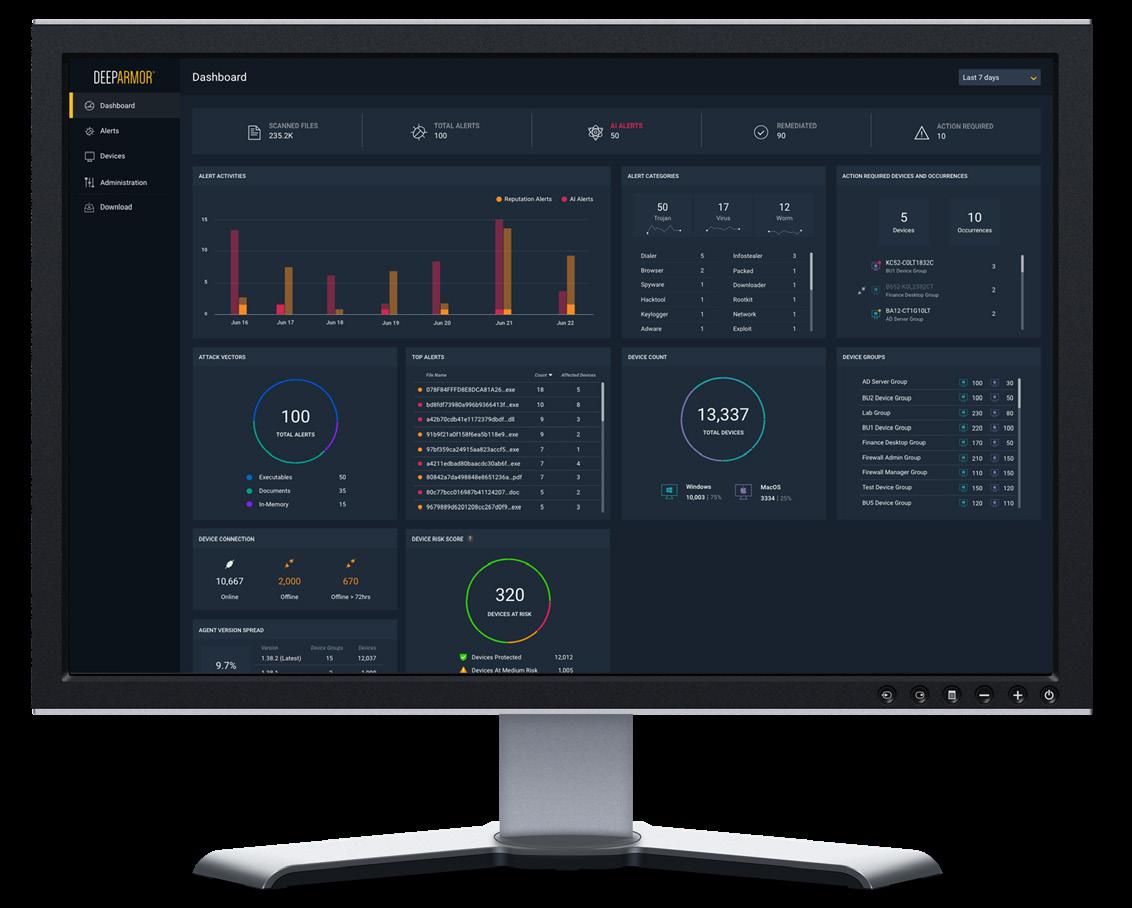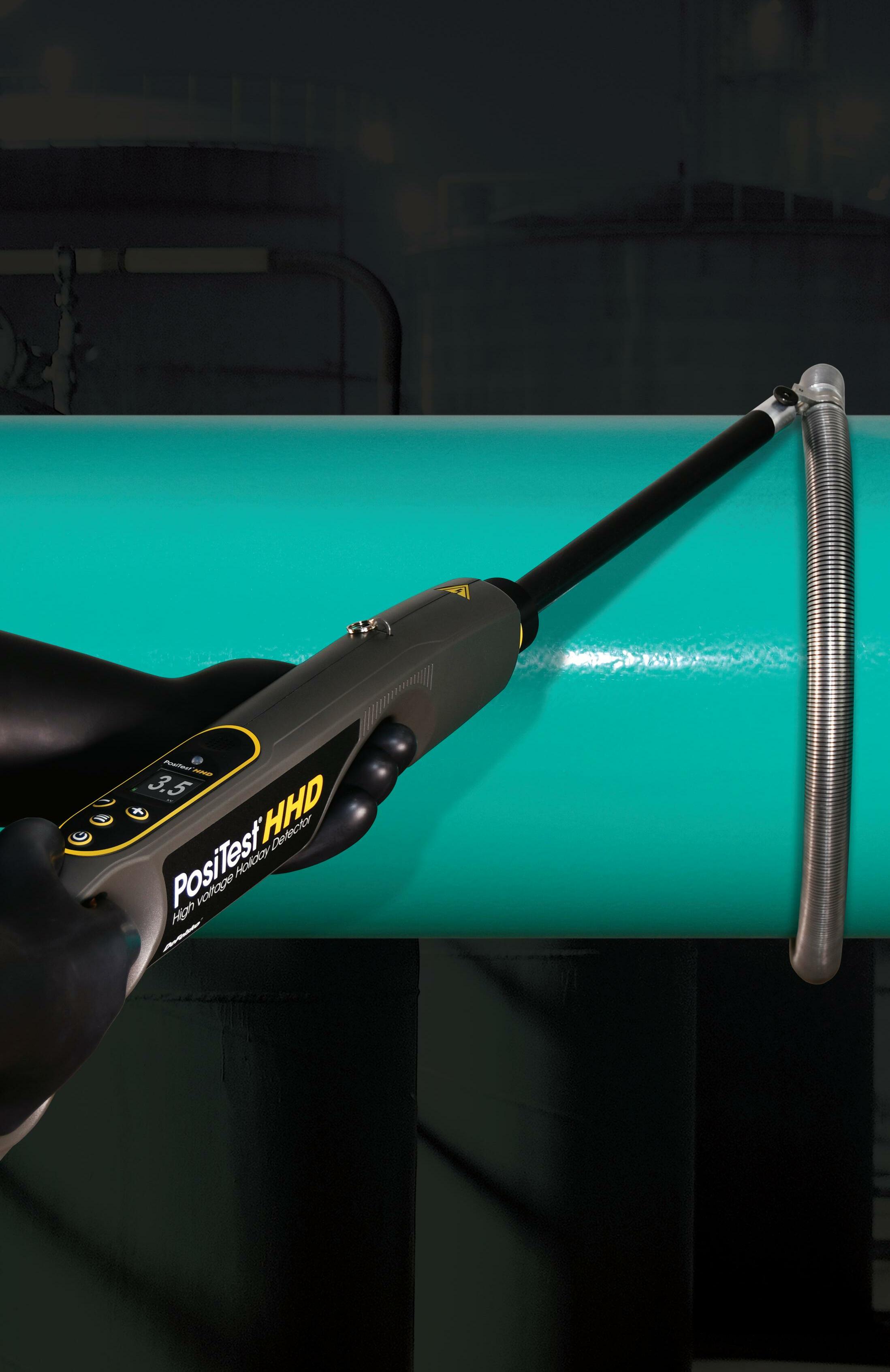
7 minute read
Autonomous shipping: regulations, operations and technology
The future of pipeline integrity and security depends on the industry’s ability to embrace new technologies, argues Jason Chadee, SparkCognition, USA.
Pipelines are considered the safest and most efficient way to transport energy products, moving two-thirds of the petroleum volume in the US or more than 600 billion gal./yr. The pipelines represent a more efficient and economic alternative to tanker trucks, freight trains, or air freight for oil and natural gas. However, they are not without fault. When they are compromised by physical failures or digital attacks, the consequences can be catastrophic. In 2020, the US Department of Homeland Security (DHS) and Infrastructure Security Agency (CISA) reported a ransomware attack on a US natural gas facility that shut down a pipeline for two days. In 2021, Colonial Pipeline was hacked due to a single compromised password on the dark web. The breach took down the largest fuel pipeline in the US, led to shortages across the east coast, and cost Colonial Pipeline US$4.4 million in ransom. This followed a massive 2020 gasoline spill that was discovered on a Colonial Pipeline in Huntersville, North Carolina, the largest gasoline spill on land in the US. Over a year later, officials are still researching the extent of the spill and assessing clean-up efforts.
Also in 2021, an underwater gas pipe leak sparked a swirling fire in the Gulf of Mexico that raged for hours. The leak occurred in an underwater pipeline 150 m from a platform at Ku-Maloob-Zaap, an offshore oilfield in the Bay of Campeche.
The pressing problem Of the existing 2.6 million miles of pipelines that quietly carry trillions of cubic feet of natural gas and hundreds of billions of tons/miles of liquid petroleum products and hazardous materials throughout the US, more than half are at least 50 years old.
While ageing infrastructure is an issue, it is not a sole indicator of potential risk. Materials, installation techniques, seam type, corrosion prevention measures, and pipeline maintenance are all factors that impact the likelihood of an accident, as are underground disturbances, freeze-thaw cycles, soil erosion, and nearby excavation.
Pipeline and Hazardous Materials Safety Administration (PHMSA), a US agency housed within the Department of Transportation, is responsible for much of the monitoring and enforcement of pipeline safety in the US. Their mandate is honourable, but inspection criteria were initially quite irregular. Originally, the agency only required 7% of natural gas lines and 44% of all hazardous liquid lines to be subject to their rigorous inspection criteria and inspected regularly. The rest of the regulated pipelines were still checked, but less often. Later reforms mandated more testing for oil pipelines. Nearly a decade ago, PHMSA began considering human factors as a significant influence on compliance, so it began requiring owners and operators to test pipelines in ‘high consequence’ areas, which included population centres or areas near drinking water.
Only recently have gathering lines, the connection from wells to processing facilities or larger transmission lines, come under PHMSA regulation, wherein regulatory requirements were added to over 400 000 miles of gas pipelines previously deemed unregulated.
Monitoring and maintenance approaches are costly and inefficient because pipelines are often installed on large-scale and in inaccessible and hazardous environments. Physical inspections have typically involved smart pigs, but they are not without issues. Propelled by flowing oil, they probe the pipe from within with magnetic fields, ultrasonic waves, and calipers to record data for analysis. However, ‘smart’ pigs often fail to identify all flaws, and the data collected can take months or a year to analyse.
The Industrial Internet of Things (IIoT) helps monitor aspects of the pipelines with sensors that measure a broad range of parameters, such as pressure, flow, soil movement, and corrosion, streaming terabytes of data daily. However, it also opens the doors for malicious actors to exploit vulnerabilities. A compromised pipeline system could result in explosions, equipment destruction, unanticipated shutdowns or sabotage, theft of intellectual property, and downstream impacts to National Critical
Functions (NCF) and, therefore, impact national safety and business success. The Transportation and Security Administration (TSA) has advocated for voluntary pipeline cybersecurity standards for two decades. In the wake of the Colonial Pipeline attack, TSA issued mandatory cybersecurity rules on owners and operators of pipelines to protect against ransomware attacks and other known threats to IT and OT systems. Owners and operators are now required to develop and implement cybersecurity contingency and recovery plans, and conduct a cybersecurity architecture design review.
AI as the solution Pipeline owners and operators are turning to artificial intelligence (AI) as the first-in-line technology to solve their daunting physical and cyber challenges. AI can monitor various operating parameters of pipelines simultaneously in real-time, 24/7, and combine the information to assess the state of the pipeline system, growing smarter with each new piece of information. The data that AI proactively collects can be analysed to generate immediate responses.
An airspace management system built on AI and blockchain provides owners and operators with a next-generation approach to inspecting pipelines autonomously with drones. The technology platform includes automatic inspection planning, autonomous fleet execution, and intelligent issue recognition. The operating system (OS) leverages AI and blockchain technologies to intelligently define, synchronise, and execute independent drone inspections in complex airspace. Using a unique algorithm initially developed for rapid intelligence, surveillance, and reconnaissance (ISR) missions, sensor-equipped drones are trained to identify pipeline leaks, spills, and damage. Drone operators can either define the area they wish to survey and the size of their fleet to determine the time necessary to survey an area; or define the area and time required for a survey to determine the optimal search pattern and the number of drones needed to complete an inspection. It is suitable for a variety of tasks, from remote monitoring and methane management, to asset maintenance and emergency response operations.

Figure 1. DeepArmor is an AI-powered endpoint protection product that continuously trains on millions of malicious and benign files, providing next-generation endpoint protection against a broad spectrum of threats.
Figure 2. With millions of new malware variants showing up each month, DeepArmor uses AI models to detect and prevent cyberattacks, including zero-days, ransomware, trojans, malware, crypto-miners, etc.

Using the technology platform, the area of the pipeline that is needed to survey is defined. The system automatically provisions airspace where possible and then determines the number of vehicles required and optimal routes for drone fleet inspections. When launched, the drones autonomously execute their individually coordinated missions.
Drones can be equipped with specialised thermal, infrared, and LiDAR sensors to identify equipment failures, methane leaks, or spills. Using additional AI algorithms can automatically distinguish inventory or substances from their surroundings. Owners and operators have access to real-time video feed as drone fleets execute their missions. AI-powered cybersecurity Pipeline anomalies and threats do not wait, and neither should threat analysis and management.
Over the years, cyberthreats have increased in direct correlation with more weak points in pipeline infrastructure. As owners and operators embrace big data, edge computing, and automated solutions to reduce costs and improve efficiencies, they are naturally adopting risk-based approaches to securing the technologies and processes that serve as the foundation for their hyperconnected IIoT model.
AI is the transformative technology that is prepared to tackle sophisticated cyberattacks on pipelines and critical infrastructures. SparkCognition, working with Siemens Energy, developed DeepArmor®, an AI-based cybersecurity solution that provides zero-day protection against the most advanced ransomware, viruses, malware, and more. It uses machine learning to flag never-before-seen cyber threats, protecting critical assets, and using advanced algorithms to determine when a nefarious action or event might turn into malware and then defend against it. The AI-driven solution provides a defence layer independent of threat intelligence while eliminating the need for threat signature updates or specialised analysts to secure individual operational technology systems. The platform uses behavioural analysis to continuously monitor and detect new threats and provide the first line of defence and immediate protection against both previously identified and zero-day attacks on endpoint devices. As a result, the solution can prevent or mitigate attacks from new sources that are still unknown to the industry or security professionals while lowering the security spend for asset owners.
The future of AI for midstream Over the past two decades, experts have been at war with ageing infrastructure using inadequate tools, technologies, and resources. Physical failures and cyberattacks have been met with a reactive response, instead of a proactive prioritisation of AI’s role in securing and optimising energy, monitoring integrity, and reducing safety risk and environmental impact. The future of pipeline integrity and security will depend on the industry’s ability to embrace new technologies, including AI and machine learning.

Highvoltage Holiday Detector
Detects holidays, pinholes, and other discontinuities using pulse DC
n Lightweight, ergonomic design provides comfortable all-day use, reducing operator fatigue n Regulated pulse DC voltage output that won't change under load — ±5% voltage accuracy n Voltage calculator feature — choose one of 11 international standards, and input the coating thickness to automatically calculate the required test voltage n Long Form Certificate of Calibration included with each instrument










